58 results found cork oak
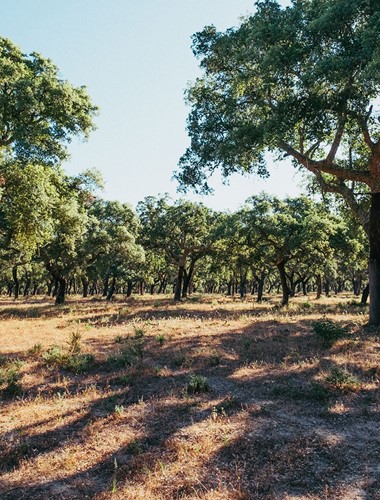
Cork Oak Forest
From all the cork oak forests, approximately 340 000 tonnes of cork are harvested each year.
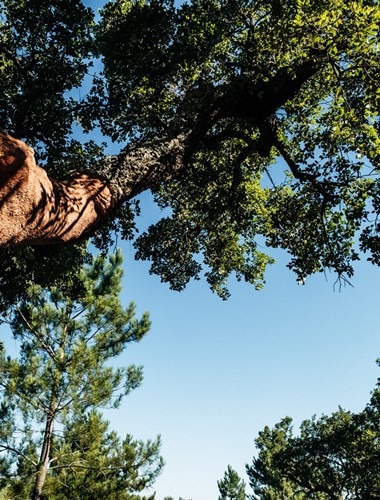
The true value of cork oak forests
"Cork oak forests provide benefits to society, on average worth more than € 1300 / ha per year"
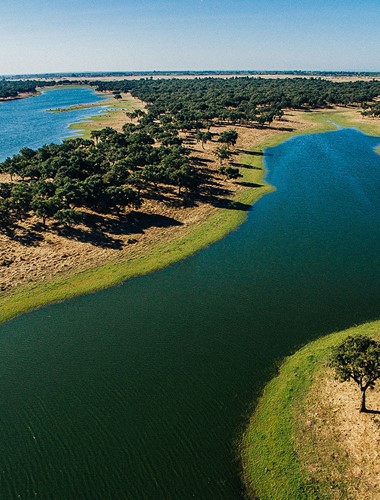
Preservation of the cork oak forest
It makes the cork viable in a unique manner, and as a result, the preservation of the cork oak forest, a unique example of green economy, which is based on a balance between economic, social, and environmental issues. The constant concern to adopt and reinforce sustainable development practices makes Corticeira Amorim…
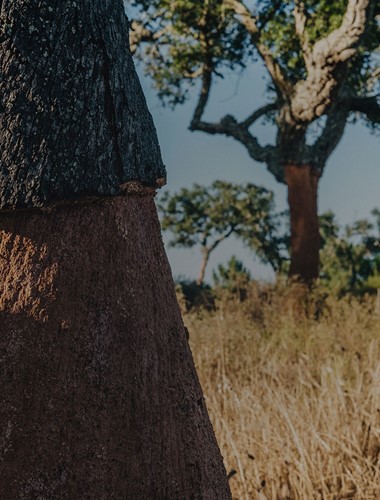
What is the cork oak?
The cork oak is an evergreen tree, of the Fagaceae family (Quercus suber), to which the chestnut and oak tree also belong. There are 465 species of Quercus, mainly found in temperate and subtropical regions of the Northern Hemisphere. Cork is harvested from the Quercus suber L species.
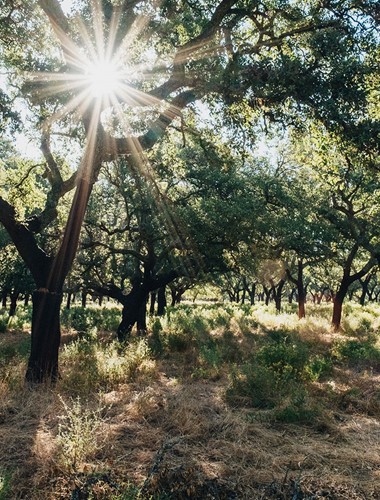
Why is the cork oak called Quercus suber L.?
The name Quercus suber L. stems from the fact that the cork oak belongs to the oak family - «Quercus (oak) suber», because it is a subspecies of the oak tree - and L. derives from Linnaeus, who was the first botanist to describe the species.
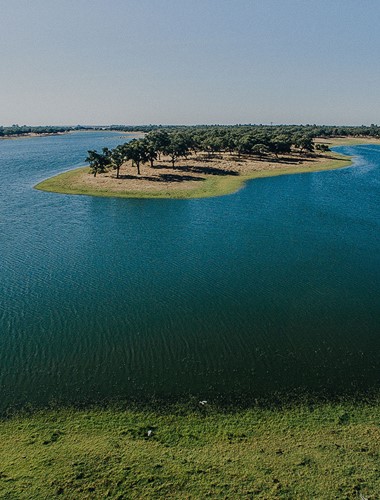
How important are cork oak forests?
Cork oak forests contribute to the preservation of biodiversity and the survival of many indigenous animal species, some of which are in danger of extinction. Equally important is its role in capturing CO2, the regulation of the hydrological cycle and restraining environmental and social desertification.Cork oak forest…

Cork oak forests are natural CO2 retainers, the major cause of global warming
It is estimated that every year cork oak forests retain up to 14 million tons of CO2, a sizeable contribution for reducing greenhouse gas emissions, the main cause of climate change.
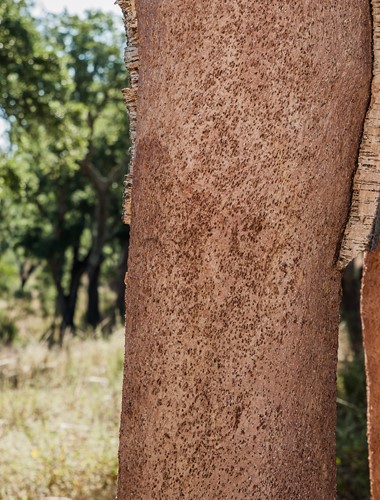
Cork is the outer bark of the cork oak tree (Quercus suber L.).
100 percent natural, reusable and recyclable, cork is, whether from the environmental, social or economic perspectives, one of the world’s most versatile materials. It takes each cork oak 25 years before it can be stripped for the first time and it is only from the third stripping (at 43 years of age) that the cork, th…
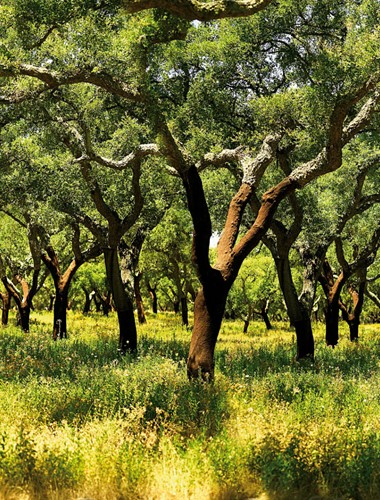
The Life Cycle Assessments analyzed different ACC products and concluded that they all have a negative carbon balance, when considering the…
From the origin of the raw materials to the factory gate: what are the environmental impacts of Amorim Cork Composites’ products? This was this question that we wanted to answer when we began a Life Cycle Assessment (LCA) process for several products. The results showed that, without exception, they all have a negative…
Cork and Nature
Cork oak forest
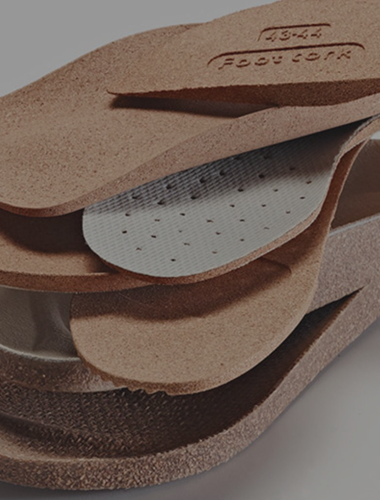
Cork grows in orthopaedic and comfort footwear
From the cork oak tree creating comfort in the footwear industry.

Cork grows in orthopaedic and comfort footwear
From the cork oak tree creating comfort in the footwear industry.

Sustainable Material
Cork is harvested from the bark of cork oak trees, which regenerate, making it an environmentally responsible choice.
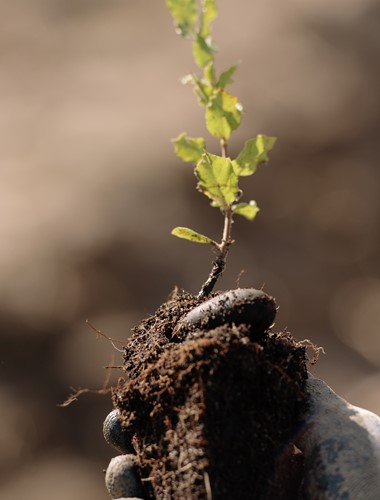
6. REFOREST
For each ton of material received within the ReVALUE project, we will plant 1 cork oak tree. During their lives, these cork oak trees will sequester many tons of CO2 – making a valuable contribution to combating climate change.
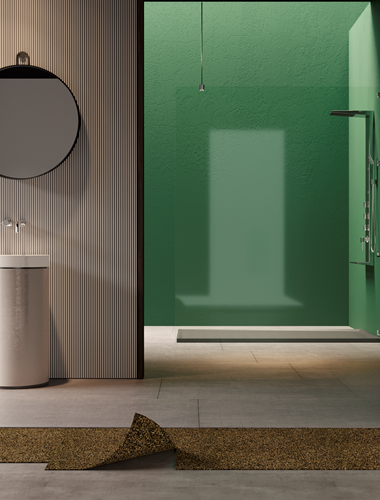
Respect for nature
100% natural, reusable and recyclable, cork is one of nature’s most extraordinary products. When harvesting cork bark, no trees are cut down, and the process is even beneficial, since a stripped cork oak absorbs on average five times more carbon dioxide during the natural process of regeneration than a regular cork oak…
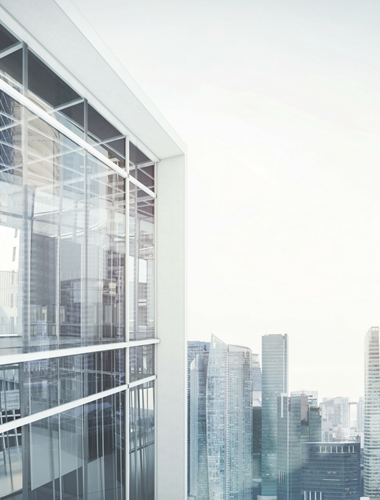
Proteção natural do ambiente
Montados (cork oak forests) are natural retainers of CO2 - the biggest cause of global warming. It is estimated that cork oak forests retain up to 14 million tonnes of CO2 per year, a valuable aid for reducing greenhouse gases - the main source of climate change. Carbon retained by cork oak trees is stored in the cork…
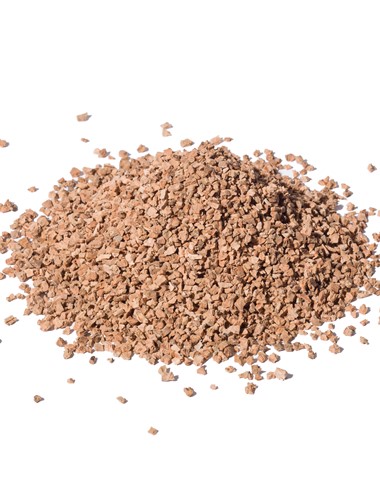
Cork
Cork is the bark of the cork oak (Quercus Suber L.). 100% natural, renewable, reusable and recyclable, cork is, whether from an environmental, social or economic point of view, one of the most versatile materials in the world, and can be used in various processes and sectors. It is estimated that for every ton of cork…
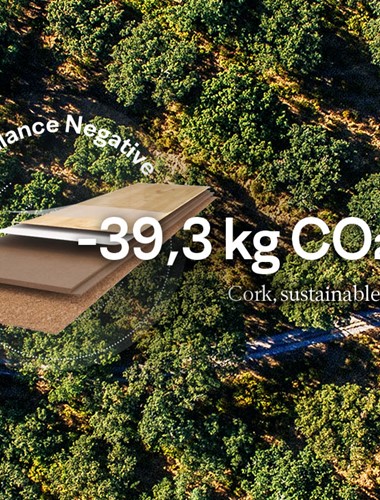
NRT Top Layer - Negative Carbon Balance
Top Layer NRT®94 has a negative carbon balance of -39.3 kg CO₂/m₂*, when taking into account the CO₂ sequestered by cork oak forests and the emissions associated with the industrial process.
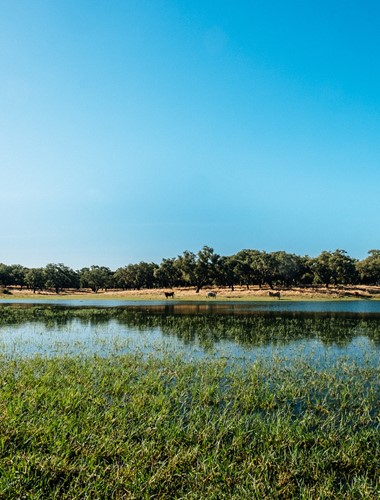
Carbon Balance
Carbon Balance The carbon balance is the result of a scenario analysis, incorporated into the carbon footprint study, which simulates the inclusion of carbon sequestration associated with the entire cork oak forest ecosystem and cannot, without internationally recognized methodology, be considered for an offset. The li…
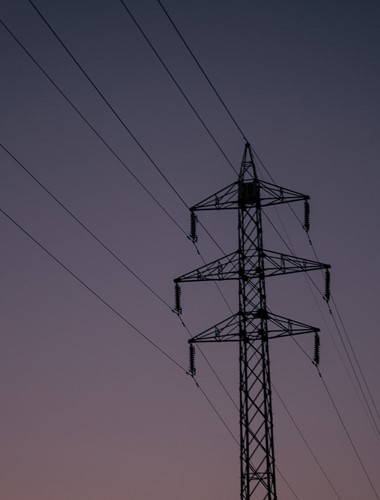
Did you know that…
…cork achieves the technical performance required by the market while maintaining its sustainability credentials, given that cork oak trees are important natural carbon retainer? It is estimated that per each ton of cork produced, the cork oak forest can sequester up to 73 tons of CO₂.
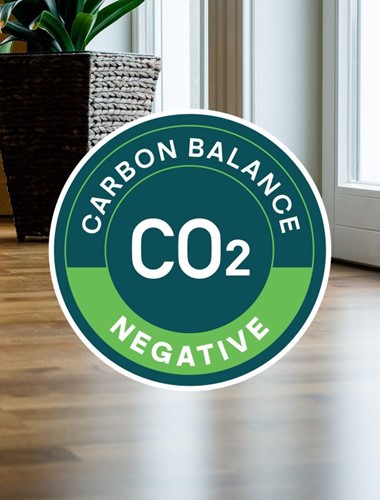
Negative Carbon Balance
According to a recent assessment study conducted by EY, Go4cork Blend with Nike Grind has a negative carbon balance of -5.6kg CO2 eq/m2. This means that the product’s associated carbon sequestration promoted by the cork oak forest exceeds the CO2 emissions from production. The environmental footprint study of the Go4co…
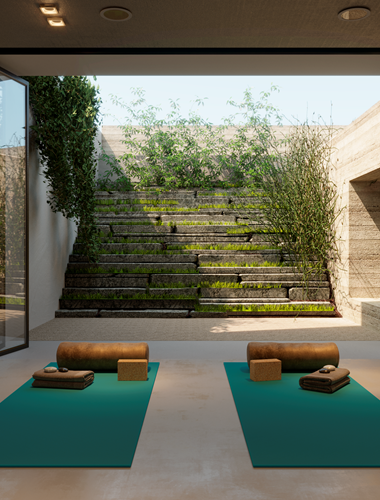
5. Sustainability
Cork is a material of natural origin, sustainable and renewable, extracted from the bark of the cork oak tree, without harming the tree. These characteristics make cork yoga props an option that respects the environment and is fully aligned with a more conscious lifestyle.
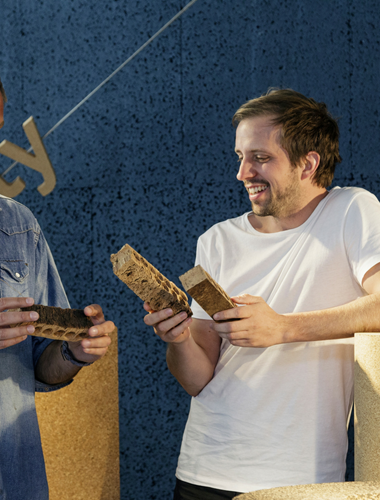
How would you describe the cork harvesting process?
Cédric: It’s a world of inspiration. A unique process that feeds so many industries. With so many diverse applications. And all this just from the cork oak tree. Klas: It’s romantic, tough, an entire history encapsulated in a single moment, filled with laughter, expertise, warmth, gentleness and complete harmony.
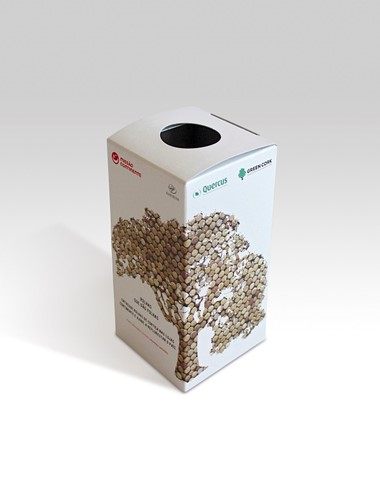
Recycled cork and new products
The cork oak forest helps preserve biodiversity and guarantees the survival of many native species, some of which are endangered. It is also equally important as a carbon sink, and ensures regulation of the water cycle and water retention, and helps prevent desertification and depopulation of rural areas. Recycling, in…
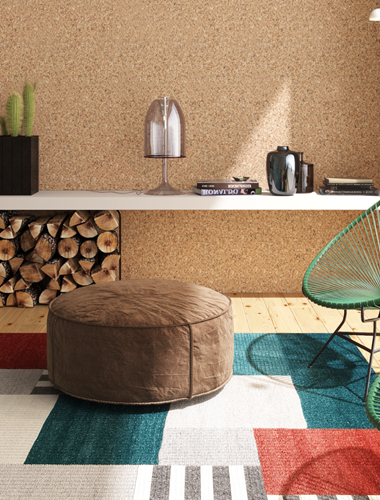
text 1
1. Cork is an organic and sustainable material Cork is the bark of the cork oak. It is removed every nine years, without the tree having to be cut down, and it grows back again. In fact, the cork oak is the only tree with self-regenerating bark, making cork a 100 % renewable and sustainable material. Choosing cork co…

4. Sustainability
Cork is a 100% natural, reusable and recyclable raw material. Studies show that for every ton of cork produced, the cork oak forest sequesters up to 73 tons of CO2. Produced from the bark of the cork oak tree without any trees being felled during the process, cork can be used for a variety of highly technological produ…
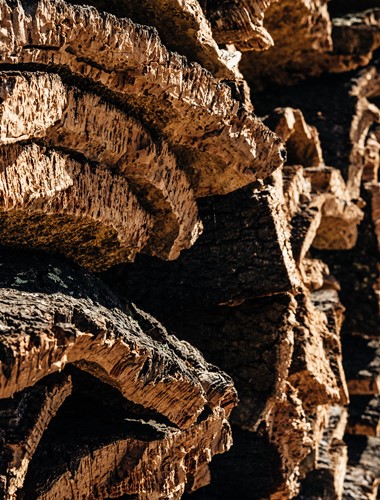
An (even more) sustainable solar
The main properties of cork – such as impermeability, lightness, elasticity, compressibility and resilience - remain unchanged, ensuring the floater's performance. It should also be noted that, for each ton of cork produced, the cork oak forest can sequester up to 73 tons of CO2. This factor reduces the environmental i…
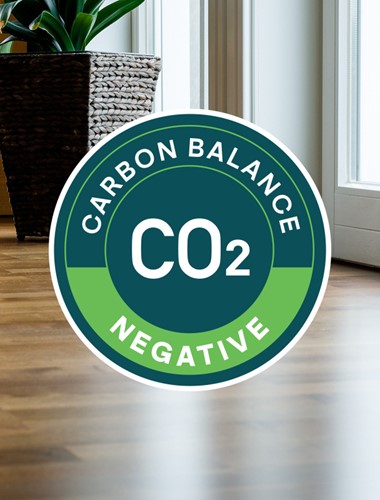
Top layer NRT 94 with negative carbon balance
Amorim Cork Composites commissioned an independent Carbon Footprint and Life Cycle Assessment study, that aimed to identify the environmental impact of Top Layer NRT 94. The study, which assessed the impacts of forestry management, transport of raw materials and production, concluded that Top Layer NRT 94 has a negativ…

Acousticork Products have Carbon Balance Negative
Underlayments Acousticork have a negative carbon balance, when taking into account the CO2 sequestered by cork oak forests and the emissions associated with the industrial process. Elevate the comfort, protection, and durability of your flooring with our sustainable and high-performing cork-based solutions: Acousti…

What kind of contribution do you think cork can make to contemporary architecture and design?
To elevate the awareness of how to integrate pure nature within contemporary interiors. We notice that lots of people are still sceptical about cork. They relate it to cheap, playful design, or they don’t really trust since they prefer to work with oak or marble… We want to create a platform where cork doesn’t look lik…

Pre-attached underlayment NRT®62 and NRT®62 VB
The NRT®62 and NRT®62 VB Pre-attached Underlayment have a negative carbon balance of - 11.8 kg/eqCO₂ per m²* and - 10.5 kg/eqCO₂ per m²*, respectively, when taking into account the CO₂ sequestered by cork oak forests and the emissions associated with the industrial process. *EY Study: Pre-attached underlayment NRT62…

Negative Carbon Balance
According to a recent analytic study conducted by EY, Go4cork Blend with Nike Grind has a negative carbon balance of -5.6kg CO2 eq/m2. The associated carbon sequestration promoted by the cork oak forest exceeds the CO2 emissions from production. Go4cork Blend with Nike Grind is an excellent option for customers that…

Negative Carbon Balance
According to a recent analytic study conducted by EY, Go4cork Blend with Nike Grind has a negative carbon balance of -5.6kg CO2 eq/m2. The associated carbon sequestration promoted by the cork oak forest exceeds the CO2 emissions from production. Go4cork Blend with Nike Grind is an excellent option for customers that ai…
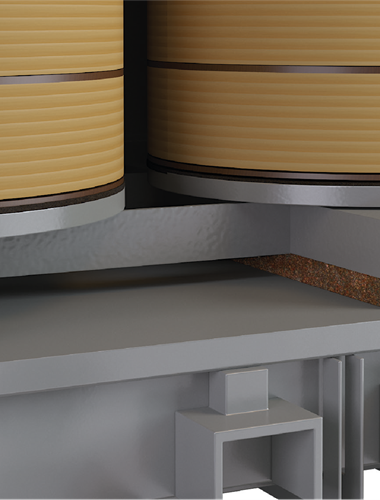
notas
(1) Source: Instituto Superior de Agronomia (ISA), 2016(2) Indicative values based on the carbon balance of cork. The carbon balance measures the carbon sequestration fostered by the cork oak forest that corresponds to the amount of cork used in the product.
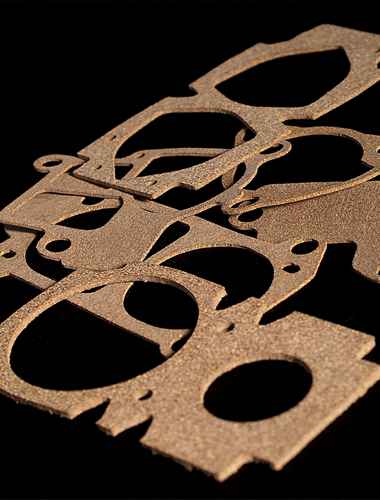
notas
(1) Source: Instituto Superior de Agronomia (ISA), 2016(2) Indicative values based on the carbon balance of cork. The carbon balance measures the carbon sequestration fostered by the cork oak forest that corresponds to the amount of cork used in the product.
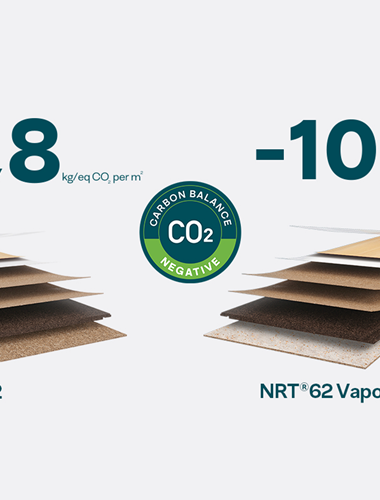
Negative carbon balance
According to a life-cycle assessment conducted by the consultancy firm, EY, the carbon balance of the component Amorim NRT®62 flooring solutions without a vapour barrier is -11.8kg CO2 eq/m2, whereas the carbon balance of the component for Amorim NRT®62 flooring solutions with a vapour barrier is -10.5kg CO2 eq/m2. Sin…

What is cork?
Cork is the bark of the Cork Oak tree (Quercus suber L). It is a completely natural raw material, with unique properties which give it an unrivalled character. It is light, impermeable to liquids and gases, elastic and compressible, provides thermal and acoustic insulation, it is a fire retardant and highly abrasion-re…
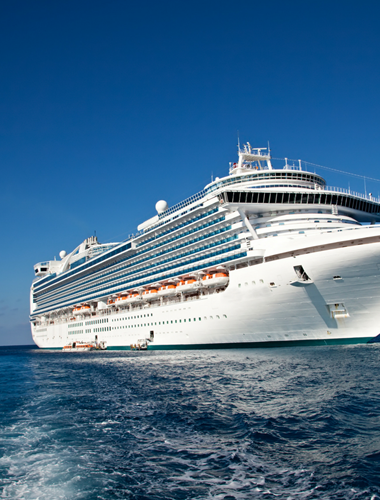
Green shipbuilding reaches cruise speed with the help of Amorim Cork Composites primary decking materials. Innovative and sustainable cork-b…
The key factor in ensuring a negative carbon footprint is the genesis of the cork oak forest which is a carbon sink, responsible for retaining 73 tons of CO2 per ton of cork used for a typical application this corresponds to 2,7 kilotons of CO2 retention.
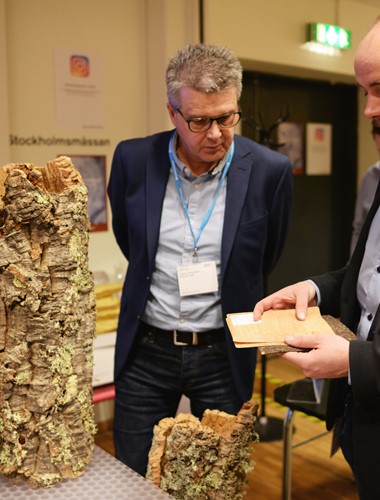
Sustainability is more than a trend.
Cork, one of the most sustainable materials in nature, presented its charm at the Stockholm Furniture Fair. The material library was the main stage for cork´s presentation, where designers and architects had the opportunity to be introduced to the science of nature. The Scandinavian market continues to be a trend se…

1. Sustainability
Cork is a 100% natural, renewable and recyclable raw material that derives from the bark of the cork oak tree without any trees being damaged in the extraction process. Incorporation of cork into materials used for vehicle interiors ultimately helps reduce the ecological footprint of the materials used in this industry…
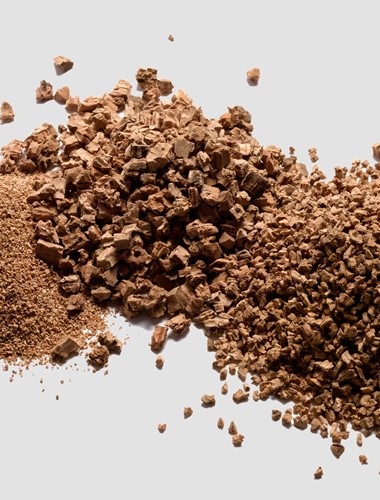
One of Nature's most extraordinary materials
100 percent natural, reusable and recyclable, cork is, whether from the environmental, social or economic perspectives, one of the world’s most versatile materials. It takes each cork oak 25 years before it can be stripped for the first time and it is only from the third stripping (at 43 years of age) that the cork, th…

One of the main challenges that the electric vehicle industry faces is to find sustainable materials to incorporate into their designs, in o…
Amorim Cork Composites has now launched an innovative range of multilayer systems that combine cork with other materials - such as mica, foam or aerogel - to create more sustainable, high-performance solutions. Cork is a 100% natural, reusable and recyclable material, and from an environmental, social or economic persp…
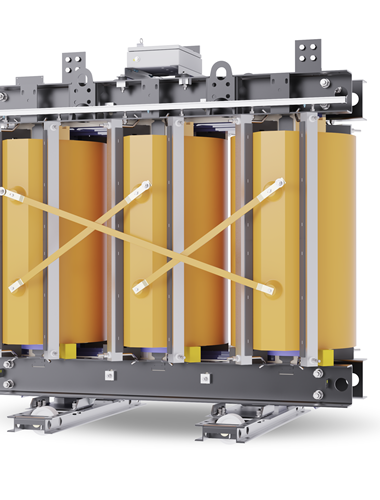
close
In addition to its technical advantages, cork is one of the world’s most versatile materials and is 100% natural. Studies show that for every tonne of cork produced, the cork oak forest sequesters up to 73 tonnes of CO2, and no trees are felled in the process. Are you looking for sustainable solutions to mitigate the n…

close
In addition to its multiple technical advantages, cork is 100% natural and one of the world’s most versatile materials. Studies show that for every ton of cork produced, the cork oak forest sequesters up to 73 tons of CO2, and no trees are felled in the process. In equipment that includes a shunt wall, this can be used…
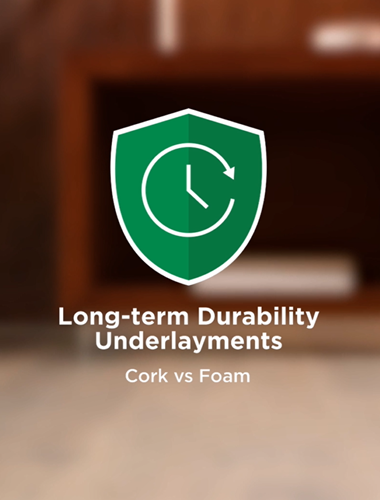
Why choose a cork-based underlayment instead of a 100% foam solution? To help you answer that, we ran the following tests...
Two comparative tests were conducted between cork underlayments and 100% foam underlayments, in order to assess the durability of cork-based solutions vs. synthetic solutions from the same category. The results of the Dynamic Load Test and the Compressive Creep Test revealed that cork underlayments are the best option…
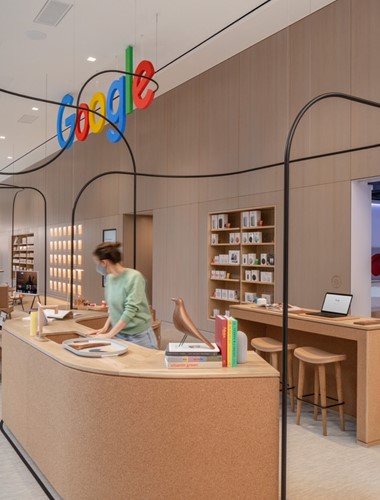
Which items of furniture were developed for the Store?
We developed full scale, functional furniture in combinations of cork and American White Oak for the space. These included furniture for a living space, including a sofa, lounge chair, large round ottoman, coffee table, bookcase, side tables, etc. We also designed objects for a children's space, including a bed, rug, s…
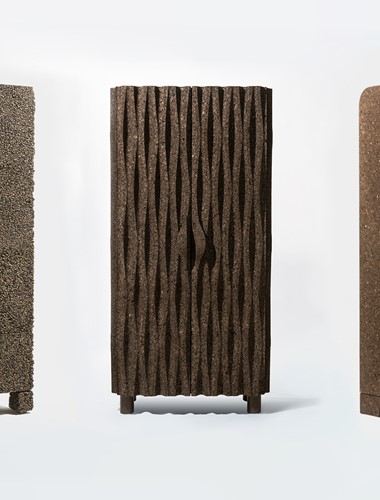
The Brazilian designer duo has created a group of pieces of furniture that explores the beauty, versatility and sustainability of cork.
Called Sobreiro (cork oak), it is the first line of cork furniture created by the renowned Campana brothers. Made up of an armchair and three cabinets, the collection marked the participation of the Brazilian designers in the 2018 edition of Experimenta Portugal, an initiative of the Consulate General of Portugal in Sa…

Cork at the service of design and sustainability
Raw materials of natural origin, such as cork which is 100% natural, recyclable and renewable, are an innovative and sustainable option for creating functional goods, with aesthetic concern, that accompany us at home, at work and during leisure time. It is estimated that for every ton of cork produced, cork oak forests…

The Carbon Balance derives from the study of the carbon footprint, taking into account the analysis of different carbon sequestration scenar…
ADDITIONAL INFORMATION ON CARBON SEQUESTRATION POTENTIAL 1. Study The claims regarding the potential of carbon sequestration are based on studies conducted by: a) PricewaterhouseCoopers: a. Amorim Sports Nature Infills b) Ernst & Young: a. NRT 94b. Fusion (5166)c. Evolution (5154) d. 8210 e. 5156 VB f. Underlay Plu…
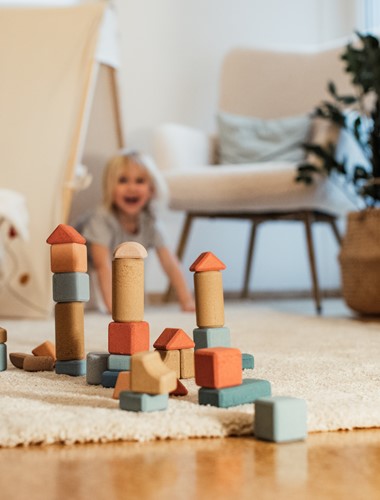
text
In the calculation of the Carbon Footprint of Korko toys, IPCC 2021 (100 years) method was used, according to the international standard ISO 14067. The impact categories evaluated were: Global Warming Potential – fossil; Global Warming Potential – biogenic; Global Warming Potential – CO2 uptake; Global Warming Potenti…
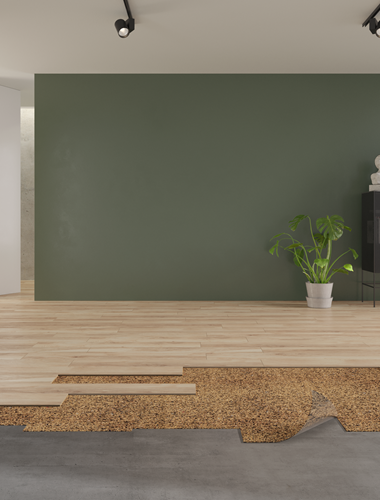
text2
According to an analytic study conducted by the consultancy firm, EY, the underlayment Plus Go4Cork by Amorim has a negative carbon balance of -8.1kg CO2 eq/m². The carbon balance of the underlayment Plus VB Go4Cork by Amorim is -7.8kg CO2 eq/m². By promoting carbon sequestration in the cork oak forest that is superior…
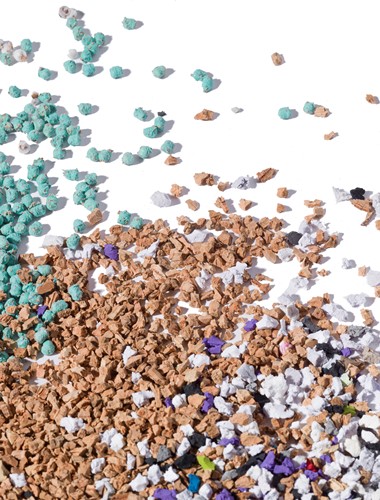
Led by innovation, we have developed a range of cork bio composites that offer the mouldability of plastics and the lightness and sustainabi…
Cork, the outer bark of the cork oak tree, is an extraordinary material that can be applied in a wide array of different situations in our daily lives. From its gentle touch to its thermal and acoustic insulation properties, this 100% natural, renewable, and recyclable raw material is one of the world’s most versatile…
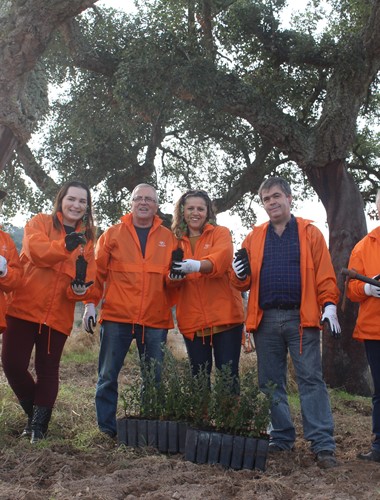
This action forms part of the company's Sustainability Program, the "Natural Choice".
Vila de Mora, in the district of Évora, recently welcomed 80 volunteers of Corticeira Amorim who planted 2000 cork oaks, thus increasing the forest area of Portugal's National Tree. Herdade da Barroca, a property of Santa Casa da Misericórdia de Mora, was the scene of the initiative that directly involved the community…
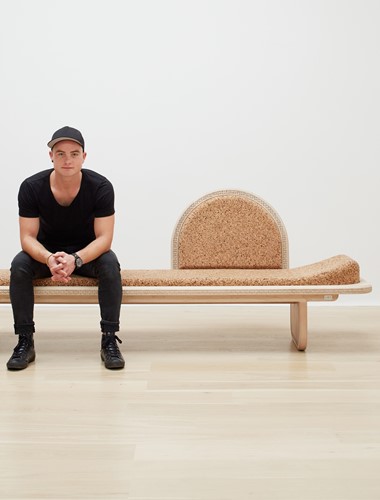
When did you decide that cork would be the main “star” of your work?
My studio started experimenting with cork back in 2010, it took a lot of time and experimenting to learn how the material works and to understand the various grades and the properties of the material. Joaquim Sá, the Managing Director of Amorim Cork, South Africa has always been a wonderful supporter of my work. From t…
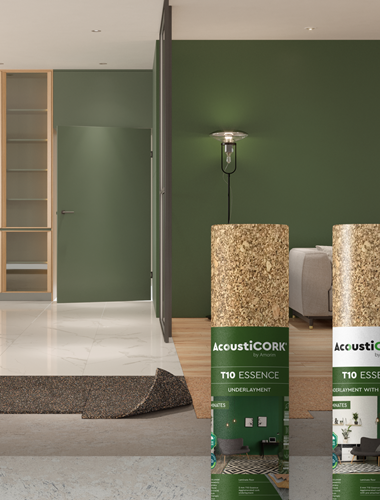
text
According to a recent study conducted by the consultancy firm, EY, Acousticork T10 Essence and T10 Essence with a vapour barrier underlayments have a negative carbon balance of -18.6 kg CO₂ eq/ m2 and -18.0 kg CO₂ eq / m2, respectively. Acousticork T56 Endurance underlayment with a vapour barrier has a negative carbon…
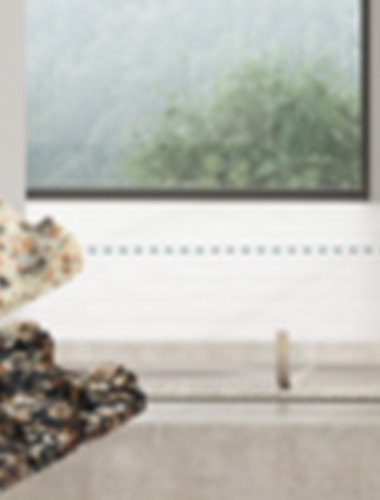
intro
A Life Cycle Assessment (LCA) study conducted by Itecons confirms that Acousticork by Amorim U36 and U38 underscreeds have a negative carbon balance. These innovative solutions, produced by Amorim Cork Composites, contribute to the performance of the flooring solutions where they are applied, in terms of acoustic insul…
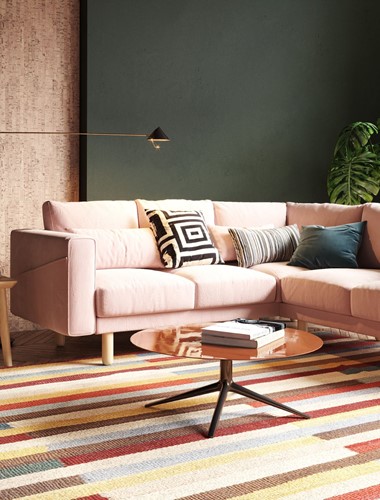
text
Because every choice counts, we've put together three tips for more sustainable interior design. These may be small steps, but they impact both your quality of life and the planet. Take note. 1. Give preference to natural lighting Make the most of daylight. Even if the size of your home’s windows or its exposure to th…

body - sustainable realm
The cork oak is the only tree whose bark regenerates, acquiring a smoother texture following each harvest. To participate in the harvesting of cork is an experience of a life time, and the start of an endless journey of discovery, where one´s senses are continuously granted with nature’s symphony. Over its history, Amo…